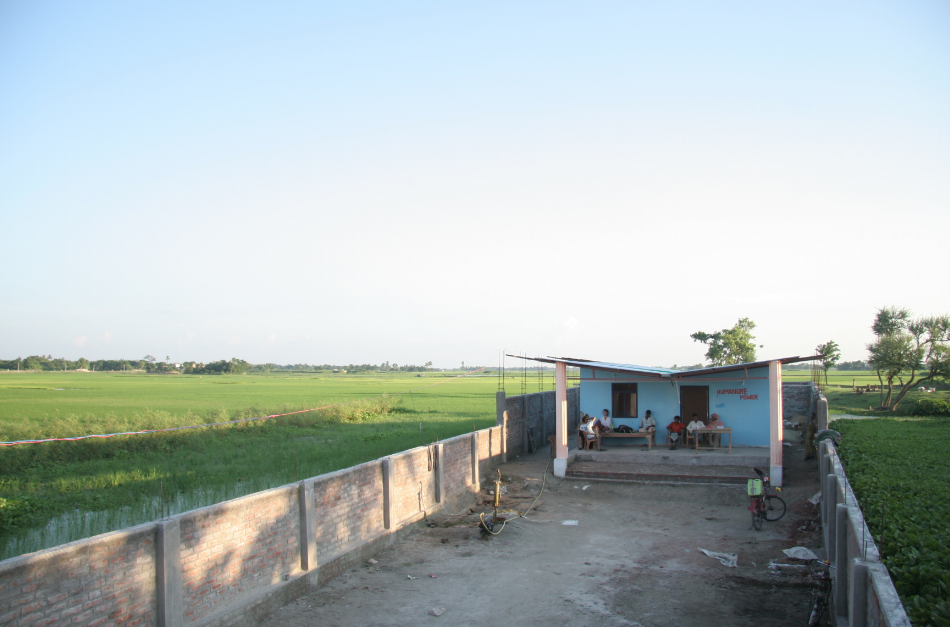Sanitation work is often hard to define. It is not clear whether you should specifically be working on providing access to a formal sewage system, building a municipal sewage system, building individual toilets, educating users, cleaning toilets, promoting use, or providing security. It is unclear how one activity should be prioritized over another or how important any single action can be. What seems to be a small piece of work turns out to have an unquantifiable number of moving parts, each with their own unique way of completely and utterly failing. While the activities being performed certainly depend on whether you are working in a rural or urban setting, in either situation all the different pieces have to fit together alongside the wants and desires of the community. In fact, getting all the moving parts to all work together alongside the community desires is often the most difficult task. In this sense it is like the generator we have on site. There are many different parts that are all meant to work together to produce electricity, but all these parts to do not always function properly at the same time. This was especially true when the dynamo broke off our generator.
 What started out as a simple move – as simply as you can move a 300 pound bulky generator – turned into broken welding and two separate pieces of a generator. With sunset quickly approaching we had to run to the market, find a repair shop, and have someone install a temporary dynamo so the generator could run for the night. This is often the story when working in rural India. Something that should have been relatively simple ended up breaking our generator into two pieces. So while we had done so much outreach to encourage use of the facility, the broken generator provided yet another roadblock. It meant that there would be no lights in the toilets, no street lights lining the paths surrounding the facility, and less people using the facility. The broken generator suddenly showed just how many moving parts relied on one another.
What started out as a simple move – as simply as you can move a 300 pound bulky generator – turned into broken welding and two separate pieces of a generator. With sunset quickly approaching we had to run to the market, find a repair shop, and have someone install a temporary dynamo so the generator could run for the night. This is often the story when working in rural India. Something that should have been relatively simple ended up breaking our generator into two pieces. So while we had done so much outreach to encourage use of the facility, the broken generator provided yet another roadblock. It meant that there would be no lights in the toilets, no street lights lining the paths surrounding the facility, and less people using the facility. The broken generator suddenly showed just how many moving parts relied on one another.
These roadblocks bring us back to the drawing board and force us to think hard about how we can include the community even further. They incorporate new voices into our decision process so that even when something goes wrong there is little point in viewing it as a setback. Instead we view it as the opportunity to reevaluate our own process and make sure our programs are working for everyone in the community. Not every system works in its initial form, but we fortunately have many partners in the village and many vocal challenges to the work we do. This keeps us true to the cause of sustainably providing sanitation services and ensures we are providing services that the community actually wants and needs.
Looking beyond the village of Nemua to sanitation in India, it is not enough to just build toilets. If that was the case, then the goal of ending outdoor defecation by 2019 put forth by the administration of Prime Minister Narendra Modi would be a relatively easy goal. But ending outdoor defecation goes far beyond providing toilets. The rural communities that have been forgotten for generations do not have the habits of using toilets, the government schemes meant to provide toilets do not work exactly as planned, and the benefits of building a personal toilet are often outweighed by the potential cost of a family’s entire annual salary.
We have refined our model to account for these issues. The toilets are free to use to remove yet another barrier, and we have a health education program that highlights the benefits of improved sanitation. We are working with local leaders to secure government funding for the community members and help our organization wade through the bureaucratic landscape of Indian government. The HP model has not always looked like it does today, but that is the nature of working in a community and with working in a world of so many moving parts. Whether that means providing streetlights to the neighboring village or providing clean water, the wants and desires of the community have to come first.

